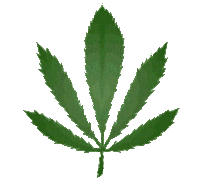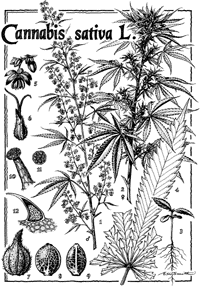Inside Dope
Quentin Hardy
In the quiet countryside just outside Vancouver, B.C. an ambitious young entrepreneur surveys a blindingly bright room filled with lovely plants--dozens of stalks of high-power marijuana. Almost ready for harvest, they hold threadlike, resin-frosted pot flowers, rust-and-white "buds" thickening in a base of green-and-purple leaves. The room reeks of citrus and menthol, a drug-rich musk lingering on fingertips and clothes.
"There's no way I won't make a million dollars," says the entrepreneur, David (one-name sources throughout this story are pseudonymous). He runs several other sites like this one, reaping upwards of $80,000 in a ten-week cycle. Says he: "Even if they bust me for one, I'm covered."
So, it seems, is much of Canada--covered with thousands of small, high-tech marijuana "grows," as the indoor farms are known. Small-time marijuana growing is already a big business in Canada. It is likely to get bigger, despite all the efforts of the antidrug crowd in Washington, D.C. On Oct. 14 the U.S. Supreme Court, by refusing to disturb an appeals court ruling, gave its stamp of approval to doctors who want to recommend weed to ease their patients' pain or nausea. In the U.S. nine states have enacted laws permitting marijuana use by people with cancer, AIDS and other wasting diseases. The Canadians are even more cannabis-tolerant; although they have not legalized the drug, they are loath to stomp out the growers. This illicit industry has emerged as Canada's most valuable agricultural product--bigger than wheat, cattle or timber.
Canadian dope, boosted by custom nutrients, high-intensity metal halide lights and 20 years of breeding, is five times as potent as what America smoked in the 1970s. With prices reaching $2,700 a pound wholesale, the trade takes in somewhere between $4 billion (in U.S. dollars) nationwide and $7 billion just in the province of British Columbia, depending on which side of the law you believe.
In the U.S. the never-ending war on drugs endures, to modest discernible effect. In a largely symbolic act the U.S. Justice Department has just imprisoned an icon of the pot-happy 1970s--Tommy Chong of the old Cheech & Chong comedy team--for selling bongs on the Internet . But in Canada the trade in pot, or cannabis (as many Canadians call it), is an almost welcome offset at a time when British Columbia's economy is in the doldrums.
Tourism here is down, and thousands of jobs got axed when the U.S. slapped tariffs on exports of softwood and then banned Canadian beef after an outbreak of mad cow disease. The marijuana business, by contrast, is thriving, not least because Canada shares a thinly guarded 5,000-mile border with the U.S., a big market. Ultimately much of the revenue flows into the coffers of hundreds of legitimate businesses selling supplies, electricity and everything else to the growers and smugglers.
And who are these growers? Not a small coterie of drug lords who could be decimated with a few well-targeted prosecutions, but an army of ordinary folks. "I know at least a hundred [of them], 20 years old to 70," says Robert Smith, who isn't part of the trade but indirectly profits from it at the furniture store he owns in Grand Forks, B.C., 110 miles north of Spokane, Wash. "Of the money coming through my door, 15% to 20% comes from cannabis--we'd be on welfare without it."
Mexico remains the biggest supplier of foreign pot for U.S. consumers, growing valleys of lower-grade grass and sending it north; some 500 tons of pot were seized at the Mexican border in 2001, more than 100 times the volume confiscated at the Canadian boundary. California is a prodigious supplier, as well. But Canada's industry is notable for its dispersion. The scattered and all but undetectable production may well herald a modus operandi for other regions.
Small growers like David bring in $900 a pound at the low end, with net margins of 55% to 90%, depending on quality, depreciation and labor costs. They produce half a pound to 30 pounds every ten weeks, selling their product to local users or peddling it to "accumulators," who then smuggle it over the border or sell it up the chain to larger brokers. Accumulators and brokers typically add $80 a pound to the cost, as do the high-volume smugglers who buy from them. Smugglers returning money to Canada for other dealers skim a 2% laundering fee.
"The first time somebody gives you a bag of money so heavy that you can't lift it, it's surreal. Pretty soon, it's just dirty paper," says Jeff, who recently retired from smuggling up to a ton of weed a week.

